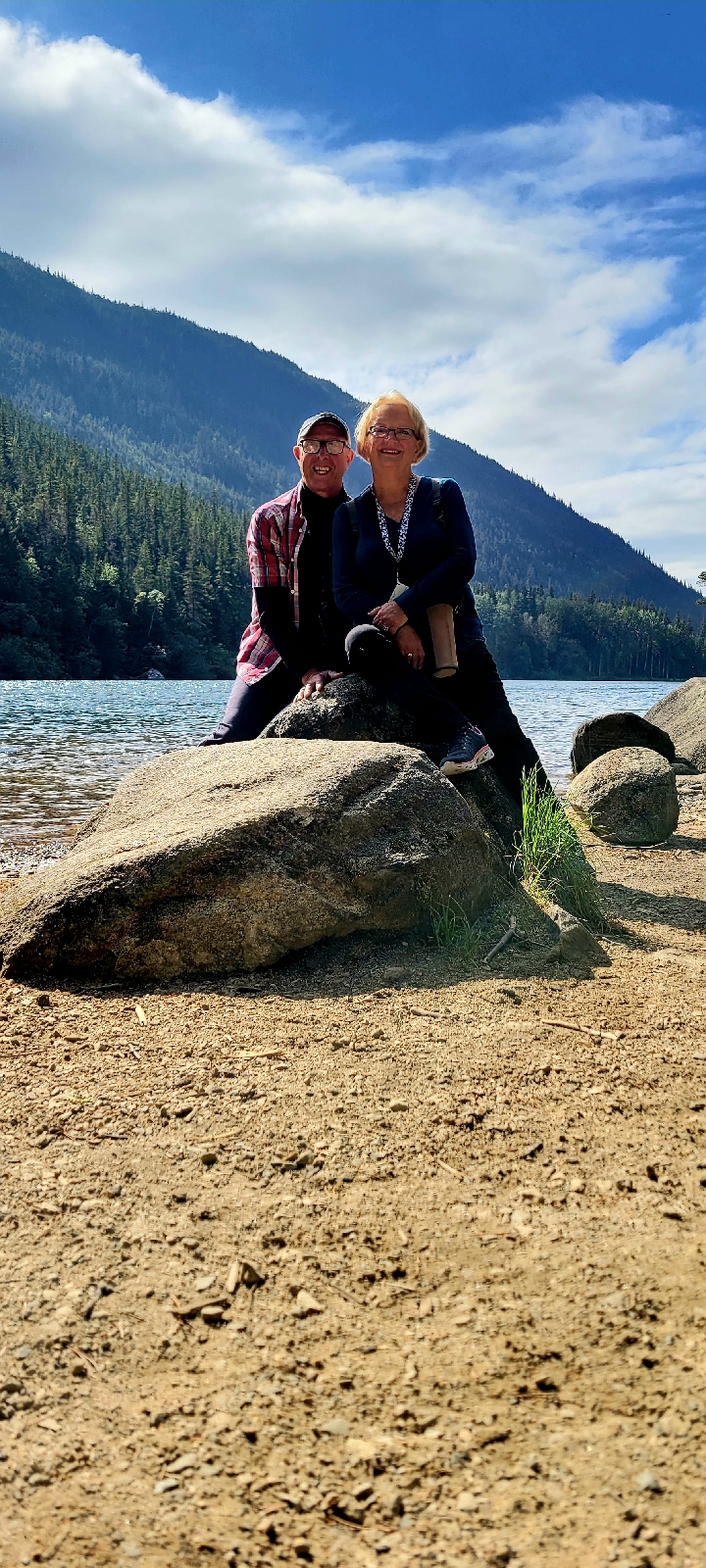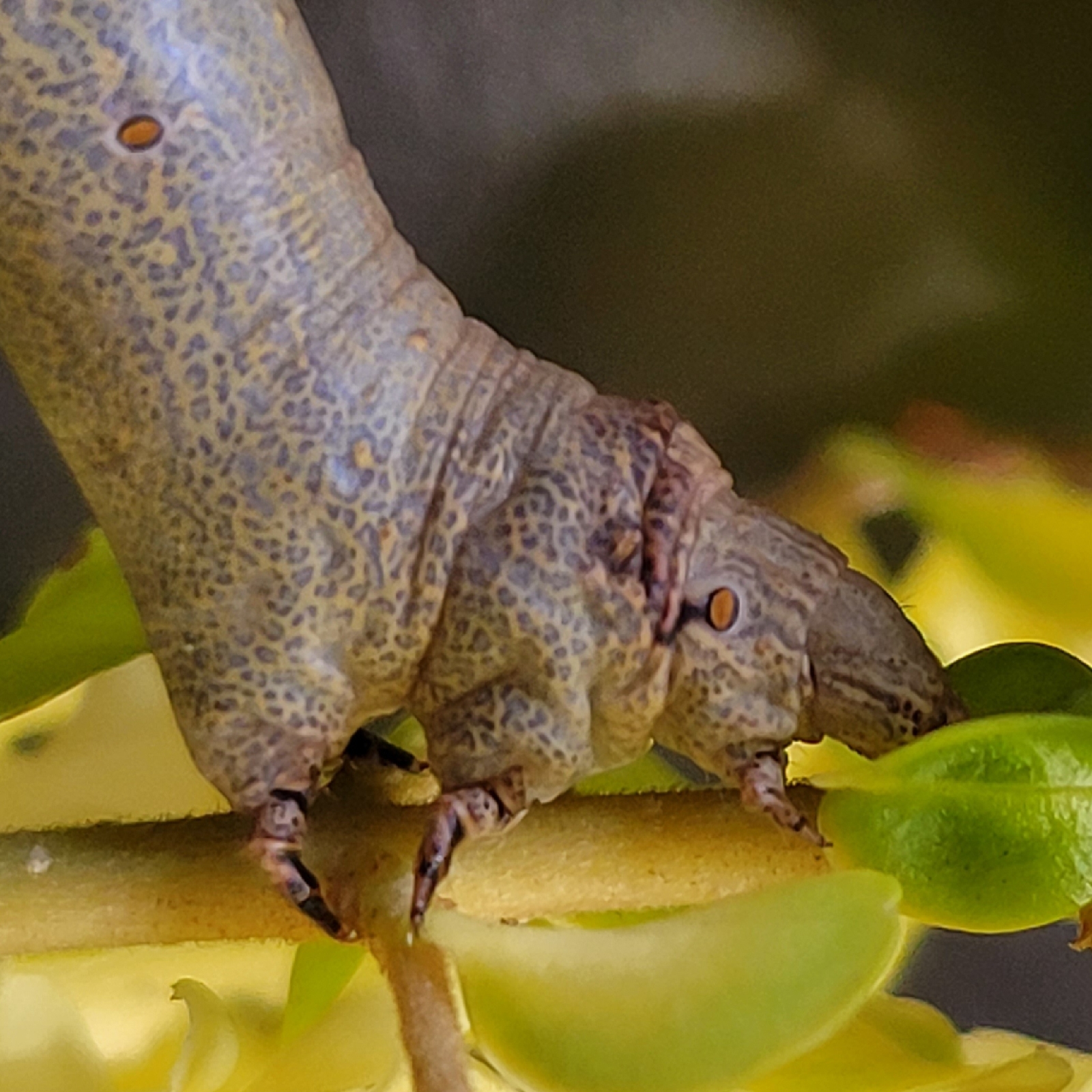I'm using him/her as an object lesson, an example,with which to make a point.
My blog point is this. You'll never get to see an amazing creature like the Curve Toothed Geometer Catterpillar without first slowing down then stopping and looking closely at the hidden world right there at your feet.
I'm big into nature. Always have been since, as a small boy, my daddy hiked me through the woods of Southern West Virginia and taught me how to identify the trees. And since both mother and daddy showed me how to identify every edible wild plant the early spring seasons had to offer. I still remember most of what they taught me and still retain the love of nature they instilled in me.
I know that one of the reasons I learned so much about the Appalachian hills is that the pace of that class room was very slow and gentle. We walked slowly through the woods. "Now look closely at the bark of this red oak" he would say to me, "this is how you can tell it from a black oak...even in winter when there is no leaves".
And learning the plants during "green pickin" time in the spring was done slowly and methodically as well. "Now this here is Lambs Quarter ya pinch off the new growth only" mother would say as we went slowly along dropping the plants into a brown paper bag.
I reckon my upbringing is the reason why, to this day, I can often be found kneeling on the ground with my face near a plant or a bush or a rock examining and photographing some small creature or some minute plant. I move through my life and my days slowly. Wherever I find myself in, any given day, I'm usually going slowly enough so as not to miss the obscure, the miniature, the often unseen world of nature.
Don't get the wrong idea I'm no sloth. I'm constantly on the go. If we are not on a trip then we are planning one! We travel from coast to coast. We visit tropical rain forests in South America and the Artic tundra in the Northern Hemisphere. But as soon as we stop I slow down, open my eyes and look around me. I get up close and personal with my world. I would much rather find, living on a rock, an insect or a lichen that I've never seen before, and take a photo of it, than I would to see the Eiffel tower. And if I were to get the chance to see the Eiffel tower I'd marvel at its size and engineering and beauty for a while and then I'd be found inspecting the plants and insects that live in the soil at its mighty base.
Pam and I were in Alaska recently. We walked trails in the world's largest temperate rain forest. And what did we do mostly? We photographed dozens of mushrooms that wed never seen before.
At low tide at the Alaska town of Hoonah, population 700, we explored the rocky shoreline exposed by the out going tide. I mean no lover of nature would ever pass up a chance like this. First of all I know that this particular opportunity may never present itself again. Hoonah Alaska, thousands of miles from our home base. I may never pass this way again. So what do we do? We do it!
And we found literally hundreds of marine creatures patiently awaiting the returning tide. Crabs, sea worms, crustaceans, bi-valves and star fish. And we photographed them all.
We flew to and landed on the Jeneau Ice field three thousand vast square mile of Icy whiteness! We walked upon a mighty glacier; one of the over 100,000 glaciers in that amazing land. From it we drank the cold water coming directly from the glacial ice.
A millions year old 2-3 pound stone that had been carried down by the mighty glacier is now my favorite Alaska souvenier. You can't fly over a glacier and experience it too. You must land, stop, look, touch and become one with such magnificence.
That's true of our lives here on earth in general. You can't just fly over top of this amazing planet; you've got to stop and get up close to experience it. You must do one or the other. I recommend the latter.
Doing what Catterpillars do best.









No comments:
Post a Comment